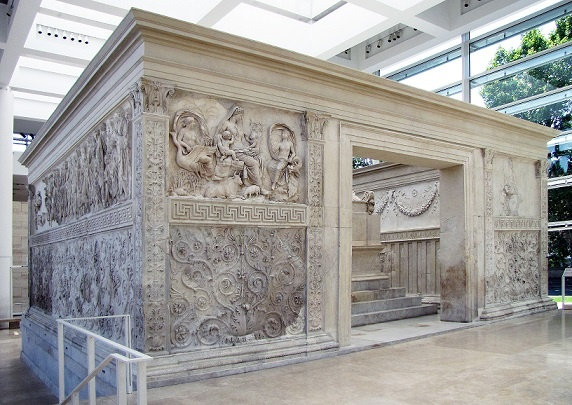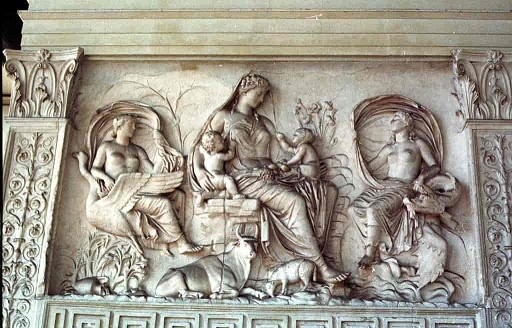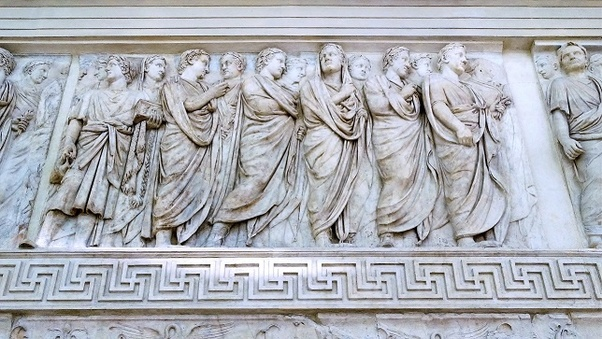Greek sculpture is renowned for its extraordinary artistry, technical innovation, and cultural significance. Spanning several centuries, Greek sculpture evolved from simple, abstract forms to highly naturalistic and expressive masterpieces. Here’s an overview of its key periods and characteristics:
Archaic Period (c. 800–480 BCE)
- Key Features:
- Rigid, symmetrical poses.
- Stylized facial expressions, including the “Archaic smile.”
- Simplified anatomy and proportion.
- Notable Works:
- Kouroi(nude male statues) and Korai (clothed female statues).
- Example: Kouros from Anavysos.
Classical Period (c. 480–323 BCE)
- Key Features:
- Greater emphasis on naturalism and idealized human forms.
- Dynamic poses and balanced compositions reflecting contrapposto (a relaxed standing position).
- Exploration of human emotion and movement.
- Notable Sculptors:
- Phidias: Sculptor of the Parthenon sculpturesand the Statue of Zeus at Olympia (one of the Seven Wonders of the Ancient World).
- Polykleitos: Known for the Doryphoros(Spear-Bearer), showcasing his “Canon” of ideal proportions.
- Myron: Famous for the Discobolus(Discus Thrower).
Hellenistic Period (c. 323–31 BCE)
- Key Features:
- Emotional intensity and dramatic poses.
- Realism in portraying age, emotion, and individuality.
- Complex compositions and intricate drapery.
- Notable Works:
- Laocoön and His Sons: A masterpiece of anguish and movement.
- Winged Victory of Samothrace(Nike of Samothrace): Celebrating triumph and dynamic energy.
- Venus de Milo: Elegance and beauty in its timeless form.
Materials and Techniques
- Materials:
- Marble: Most common for sculptures, especially in the Classical and Hellenistic periods.
- Bronze: Highly prized for its strength and ability to capture dynamic forms (many bronze originals are lost, known only through Roman copies).
- Techniques:
- Carving marble with iron tools and polishing with abrasives.
- Lost-wax casting for bronze sculptures.
Influence on Western Art
Greek sculpture has profoundly influenced Western art, particularly during the Renaissance, when artists like Michelangelo looked to Classical works for inspiration. Its emphasis on proportion, naturalism, and humanism continues to inspire artists and sculptors today.
Would you like to explore specific sculptures or learn about a particular sculptor?
The Ara Pacis is a fascinating historical monument located in Rome, Italy. It’s more than just a structure; it’s a symbol of peace and a remarkable piece of Roman art and architecture.

The Ara Pacis, which means “Altar of Peace” in Latin, was commissioned by the Roman Senate in 13 BC to celebrate the return of Emperor Augustus from his successful military campaigns in Spain and Gaul. It was meant to showcase the prosperity and stability that his rule had brought to the Roman Empire.
This magnificent altar is made of white marble and features intricate relief sculptures on its exterior. These sculptures depict various scenes, including mythological figures, processions, and the imperial family, which was a common theme in Roman art during that period.

These reliefs were not only visually stunning but also served a propaganda purpose, reinforcing the idea of Augustus as a benevolent and capable leader.
The Ara Pacis was originally located in the Campus Martius, a field near the Tiber River. Over the centuries, it fell into disrepair and was eventually buried by sediment. It wasn’t until the 16th century that its existence was rediscovered, and efforts to excavate and restore it began.

In the modern era, a stunning museum structure was built around the Ara Pacis to protect it from the elements and showcase it to visitors. This museum, designed by architect Richard Meier, is a work of art in itself, with its sleek and contemporary design contrasting beautifully with the ancient altar.

Today, the Ara Pacis stands as a symbol of both Roman power and the desire for peace that Augustus sought to promote. It’s a must-visit for anyone interested in Roman history and art, offering a unique glimpse into the past and the propaganda techniques used by ancient rulers to shape their image and legacy.

Antonio Canova’s statue The Three Graces is a Neoclassical sculpture, in marble, of the mythological three Charites, daughters of Zeus – identified on some engravings of the statue as, from left to right, Euphrosyne, Aglaea and Thalia – who were said to represent youth/beauty (Thalia), mirth (Euphrosyne), and elegance (Aglaea). The Graces presided over banquets and gatherings, to delight the guests of the gods. As such they have served as subjects for historical artists including Sandro Botticelli and Bertel Thorvaldsen. A version of the sculpture is in the Hermitage Museum, and another is owned jointly and exhibited in turn by the Victoria and Albert Museum and the Scottish National Gallery
The Graces were worshiped in Boeotia as deities of Nature. They had founded a sanctuary in their honor by order of King Eteocles, son of Kifisos.
For many years people worshiped three stones that had fallen from Heaven as their statues, and several years later carved their form into sculptures.
In their honor, the “Charitia” festival was held where the faithful danced at night and distributed sweets made of flour and honey. In Athens they had dedicated a temple to the Acropolis and the Agora, while at the entrance to the Acropolis there was the complex of the Graces.
In the sculpture of the photo, the Three Graces are depicted naked, holding hands and embracing. It is the work of Antonio Canova 1814 – 17, Italy. Victoria and Albert Museum, LondonIn Greek mythology, people owed beauty, wisdom and glory to the Graces. They were the most modest goddesses in mythology and symbolized fertility and nobilitypleasure,
Pausanias had said: “I could not discover who it was who first depicted the Graces naked, either in sculpture or in painting. In earlier times, sculptors and painters depicted them covered.”
A marble relief plaque showing the Three Graces. Copy of a c. 470 BCE original by Sokrates the Boetian sculptor. (Archaeological Museum, Piraeus)
Theocritus had said “Without the Graces what could people love?”. Their name comes from the word “grace” which means gratitude, joy, consent and indulgence. In France, grace was above beauty, that’s why the phrase came out: “And grace is more beautiful than beauty.”
They lived on Olympus and were companions of Apollo, Dionysus and Athena.
According to Hesiod, the Charites were the children of Zeus and the Oceania Eurynome. According to another version, their mother was Hera or Armonia, while according to others, they have a more ancient origin and were daughters of Heaven.
Homer’s Iliad mentioned a “Helios-born”, “straftomatilousa” Charis, while Hesidous mentioned that they were called Aglaia, Euphrosyne and Thalia.
Pindar said: “All the good and all the pleasures that mortals enjoy are gifts of your goodness, and any man who has beauty, wisdom or glory owes you what he owes.” Without the modest Graces the gods would not like banquets and songs.
Stone carving is a very good form of cultural expression, which has preserved the truth, goodness and beauty in stone. Three Graces, the beautiful goddesses of the Greek Mythology who symbolized beauty and fertility.

